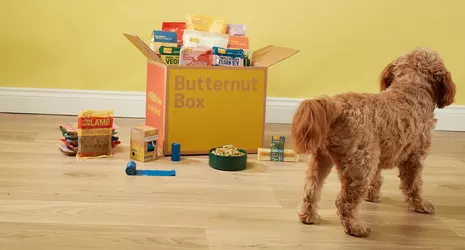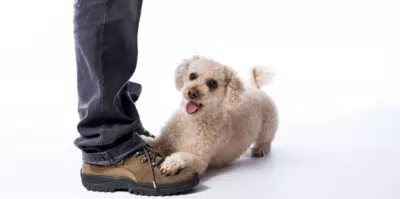Why Do Dogs Drag Their Butts?
- 29 Sep 2023
- 3m read

If you're a pet parent, you've probably witnessed it at some point – the peculiar and somewhat comical sight of your dog dragging their bottom along the ground. This behaviour is commonly known as "scooting," and while it might make for a funny video, it's essential to understand why dogs engage in this activity and how to address it.
Why Is My Dog Scooting?
Scooting can occur in both male and female dogs and it's essential to try and determine why it’s happening. Let's explore some of the common factors that lead female dogs to engage in this behaviour.
Anal gland issues
One of the most frequent culprits behind scooting in dogs is anal gland problems. Anal glands, located on either side of the anus, produce a foul-smelling fluid that is usually expelled during bowel movements. However, if these glands become impacted or infected, they can cause discomfort and irritation, prompting your dog to scoot to relieve the sensation. If you notice your female dog scooting persistently, it's a good idea to have her anal glands checked by a veterinarian.
Allergies and skin irritations
Skin irritations, allergies, or infections in the perianal area can also make dogs scoot. These conditions can cause itching and discomfort, causing your dog to drag their bottom on the ground in an attempt to alleviate the itching sensation. To address this, consult your vet, who can diagnose and treat any skin issues your dog may have.
Hygiene matters
Sometimes, dogs may scoot simply because they're trying to clean themselves. If your dog feels dirty or has residual faecal matter around the anal area, they might scoot to get rid of it. Ensuring your dog's hygiene is maintained can help prevent this behaviour.
How to Stop a Dog From Scooting
Now that we've explored some of the reasons why female dogs might engage in scooting, let's discuss how to stop this behaviour and keep your pup comfortable and happy.
Regular anal gland expression
To prevent anal gland issues, especially in smaller dog breeds that are more prone to them, consider regular anal gland expression. You can either learn to do this yourself or schedule regular appointments with your veterinarian or a professional groomer. Properly expressed anal glands reduce the likelihood of discomfort and scooting.
Consult your vet
If your female dog continues to scoot despite regular anal gland expression, consult your vet. They can examine your dog for underlying issues like infections or allergies and provide appropriate treatment. It's essential to address the root cause of the problem.
Maintain proper hygiene
Ensure your dog's perianal area is clean. Regularly bathe and groom your dog to keep her clean and comfortable. This can help prevent scooting due to hygiene concerns.
Address allergies
If allergies are the culprit, work with your veterinarian to identify and manage allergens that might be causing discomfort. Allergy medications or dietary changes can make a significant difference in your dog's comfort and overall well-being.
Should I Take My Dog to the Vet for Scooting?
The decision to take your dog to the vet for scooting depends on several factors. If your dog scoots occasionally and it's not accompanied by other concerning symptoms, you may choose to monitor the situation. However, if any of the following conditions apply, it's advisable to seek veterinary care promptly:
Persistent scooting
If your dog scoots repeatedly over an extended period, it's a sign that there may be an underlying issue that needs attention.
Discomfort or pain
If your dog seems uncomfortable or is in pain while scooting, this is a clear indicator that something is amiss. Don't delay in seeking professional help.
Visible Irritation or infection
If you notice redness, swelling, or discharge in the anal area, it's a sign of potential infection or irritation that requires veterinary assessment.
Changes in behaviour
Any changes in your dog's behaviour, such as lethargy, loss of appetite, or unusual aggression, should be taken seriously. These could be linked to the scooting issue and need evaluation.
Frequent scooting after expression
If you're regularly expressing your dog's anal glands, and she continues to scoot excessively, it's crucial to consult your veterinarian. This could indicate an underlying problem that needs attention.




.png)